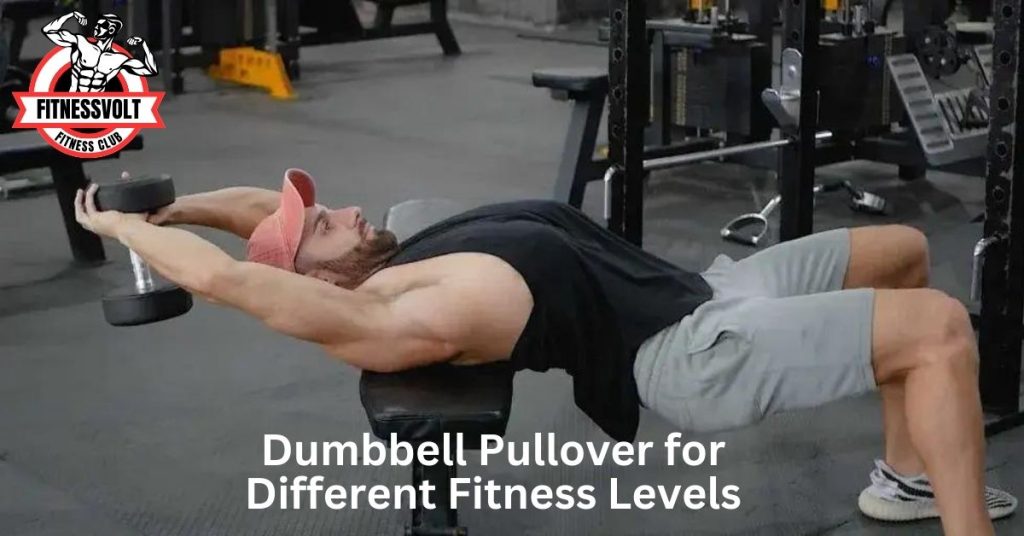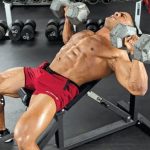The dumbbell pullover is a classic for being just that: a versatile exercise for helping to build both strength and muscle definition. An exercise that has stood the test of time since the GOLDEN ERA OF BODYBUILDING and for good reason.
The dumbbell pullover is more than just a lackluster upper-body movement it’s a full-fledged, multi-muscle-group exercise that can provide an array of benefits well beyond what you might see in the mirror.

What is a Dumbbell Pullover?
The dumbbell pullover is a strength training exercise that targets the muscles of the chest and back as well as the triceps. Lying on a bench, the move is done using just one dumbbell held above your chest with both hands as you lower it down behind your head and then pull it back over your chest. It is an easy movement but highly effective when it comes to muscle development.
Benefits of the Dumbbell Pullover
Enhances Upper Body Strength
The dumbbell pullover is perfect for growing your upper body pushing and pulling muscles to new levels! Add this exercise to your current routine and watch how your upper body power will climb during basic routines, as well as in workouts and other sports!
Improves Posture and Flexibility
See alsoPullover Muscles Pullover Benefits How To Do A Pullover Emphasizing The Back Which Exercises Could Make My Shoulders Look WiderOr Narrower? What Is Poor Posture And How Can It Harm You? This exercise helps in expanding the chest and it offsets sitting for long hours.
Versatile Exercise for Different Muscle Groups
Why It Works: Considered a compound exercise with multi-joint expression, the dumbbell pullover addresses several muscles. You can target the chest more or the back more either way it is an effective exercise to add to your routine.
Boosts Lung Capacity and Rib Cage Expansion
The Dumbbell Pullover also offers another major advantage that is rarely discussed, increased lung capacity! The movement creates a stretch in the ribcage that may expand the chest cavity aiding with long-term lung function.
Muscles Worked During a Dumbbell Pullover

Primary Muscles:
- Latissimus Dorsi (Lats): As you lower and raise the dumbbell, your back is heavily involved in these powerful muscles(rule on your back)
- Pectoralis Major: The chest muscles are another major target, especially when lifting back up.
Secondary Muscles:
- Triceps: Your triceps work to assist with stability in the back of your arms.
- Serratus Anterior: These muscles lie on the side of your rib cage and they also aid in scapular protraction.
- Core Muscles: In doing so, your core stays stable for the entirety of the exercise to maintain good form.
How to Perform a Dumbbell Pullover?
Equipment Needed: A single dumbbell and a bench.
Step-by-Step Guide:
- Setup: Start laid level on a seat and your feet established immovably. Lie on the floor holding a dumbbell with two hands over your chest.
- Grip: Put your two hands under the top half of the dumbbell and grip it by wrapping your thumbs on both sides around the handle.
- Execution: With the arms just slightly bent bring the dumbbell back behind your head to where you feel a stretch in your chest and legs.
- Return: Bring the dumbbell back over your chest, with control.
- Breathing: Inhale as you lower the dumbbell exhale and return to the beginning position.
Common Mistakes to Avoid:
- Arching the Lower Back: Keep your back neutral to reduce unnecessary stress on the lower back.
- Using Excessive Weight: Begin with a small weight to learn the movement before raising it.
- Neglecting Breathing: Without a doubt, proper breathing is going to be key here as is engaging the muscles to realize control.
Variations of the Dumbbell Pullover
Traditional Dumbbell Pullover
The basic form is done flat on a bench holding one dumbbell.
Dumbbell Pullover on a Bench
As a lying horizontal movement on a bench, this variation allows for a bigger range of motion and focuses more on the upper chest and lats.
Decline Dumbbell Pullover
This variant is done on a decline bench, and it places greater tension at the bottom of the chest while making the exercise tougher.
Single-Arm Dumbbell Pullover
This variation utilizes one arm at a time to challenge your core stability and bring out any imbalances.
Dumbbell Pullover for Different Fitness Levels

Beginner Modifications
Use a lighter weight if you’re just starting out and make sure to get your form good. Using a stability ball instead of the bench can also assist in posture.
Intermediate Techniques
More intermediate lifters can take it from there and gradually increase the weight alongside experimenting with different bench angles to target even more muscle groups accordingly.
Advanced Variations for Experienced Lifters
Super sets may be used by more advanced lifters having the dumbbell pullover performed together with exercises such as the bench press or pull-up in order to exact complete muscle exhaustion.
Integrating Dumbbell Pullovers into Your Workout Routine
Best Time to Perform the Exercise
The dumbbell pullover can be used as part of either a chest or back workout. It can also work well as a finisher due to the stretch.
Suggested Repetitions and Sets
Include these zero-rep sets of 8-12 overlap bouts for muscle hypertrophy as well! If endurance is your goal, it could be that higher repetitions and lighter weights are more suitable.
Complementary Exercises
With other upper-body movements bench presses, rows, pull-ups—to round out your workout.
Common Mistakes to Avoid
Incorrect Form and Posture
Keep your lower back on the bench and try to keep your elbows from flaring out too much.
Using Excessive Weight
You might be tempted to go heavy, but heavy weights can cause poor form and increase the odds of an injury.
Neglecting Breathing Technique
Breathe deeply and regularly to control yourself and engage the right muscles.
Safety Tips for Performing Dumbbell Pullovers
Warm-up Exercises
To begin, prepare the shoulder and chest muscles for the worst of range of movement by completing a series of shoulder/chest stretches (push-up position is best).
Proper Grip and Control
Grasp the dumbbell securely with control of the movement, but do so even more when you are awkwardly bouncing them behind your head.
Maintaining a Neutral Spine
Make sure to keep your core engaged throughout the whole exercise or else you may experience lower back strain and injury.
The Role of Breathing in Dumbbell Pullovers
Importance of Controlled Breathing
Not only will controlled breathing keep your form on point but reminds you to use the right muscle.
Breathing Techniques to Enhance Performance
One while you lower the weight completely, another while your chest and ribcage expand and a third one as lift it back up trying to constract your chest and lats.
Comparing Dumbbell Pullovers to Other Exercises
Pullover vs. Bench Press
Both exercises hit the chest but with the pullover, you will feel your lats heavily involved as well, making it a more well-rounded lift for the upper body.
Pullover vs. Lat Pulldown
The lat pulldown hits the back in a global method, while the pullover works other muscle groups that can be targeted.
Pullover vs. Cable Pullover
While the cable pullover allows you to keep constant tension on the muscle, the dumbbell pullover has a better range of motion and stretch.
Conclusion
The dumbbell pullover is one of those excellent exercises that fell out of favor after the old school era when bodybuilders like Arnold Schwarzenegger and Frank Zane regularly included them as part of their routine. Next time you decide to make your chest wider, or back larger and stronger, or simply work on your overall upper body flexibility, add the dumbbell pullover to your routine. Keep in mind like any exercise it is all about form so start light, practice the technique, and increase weight over time.


